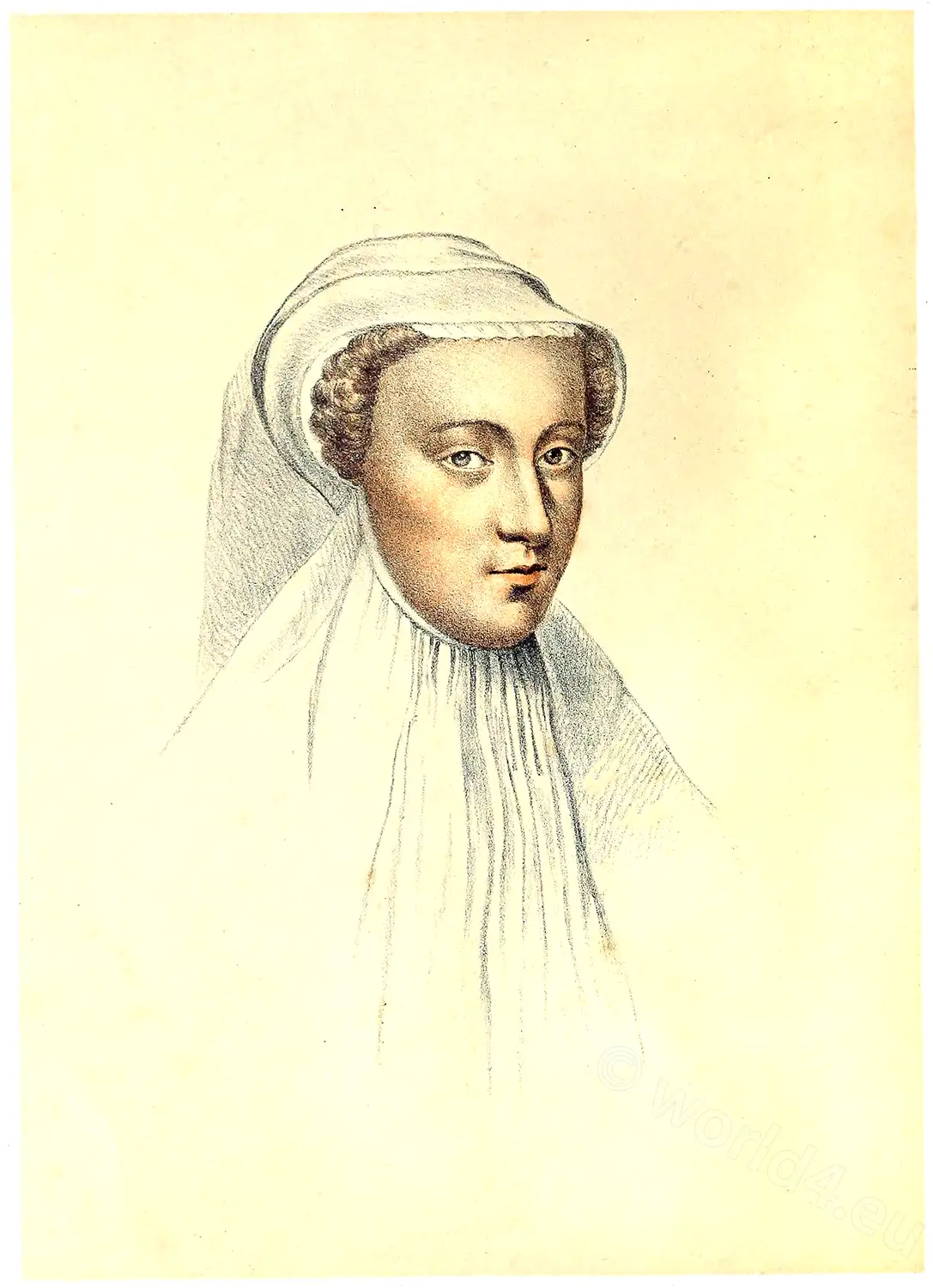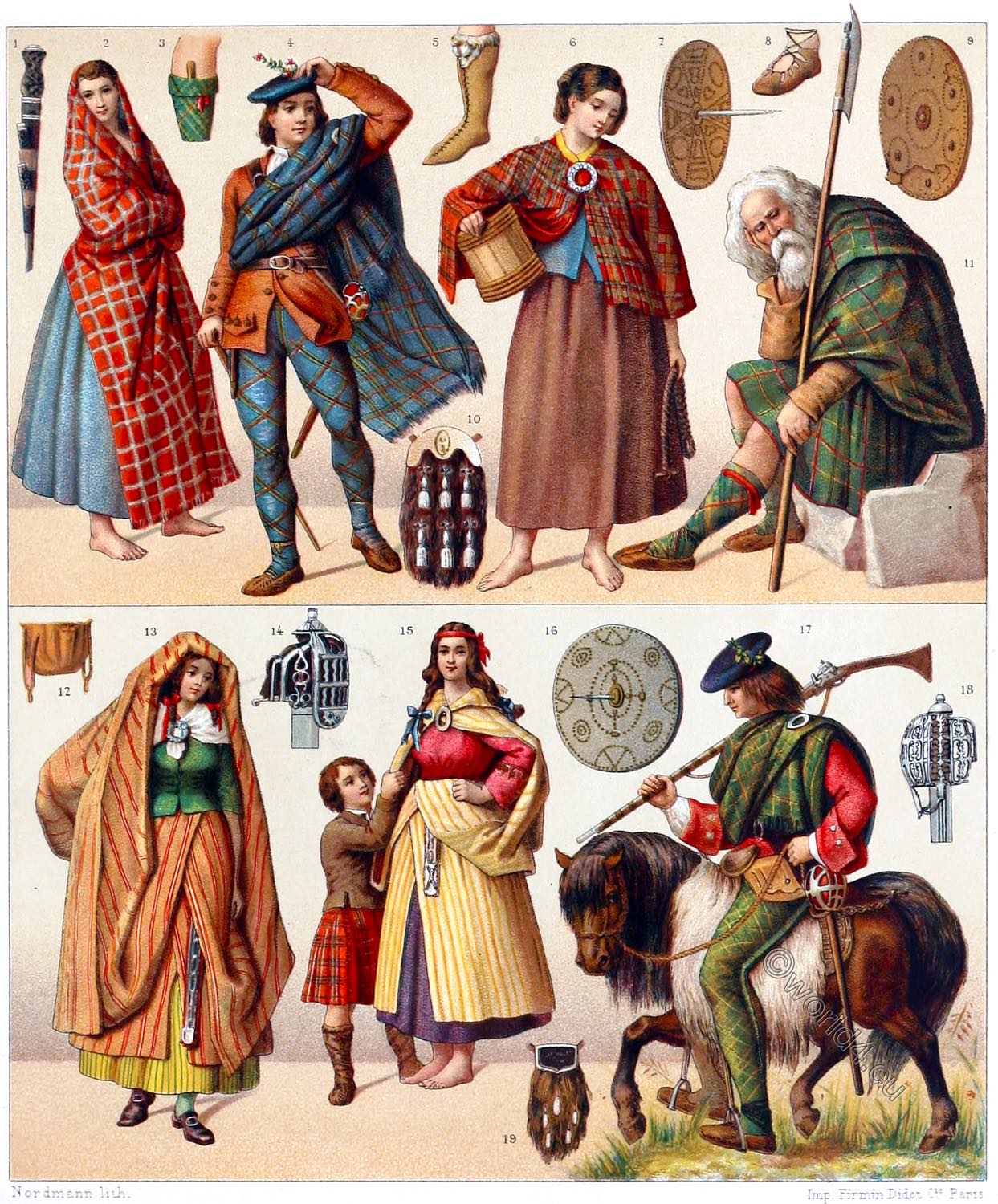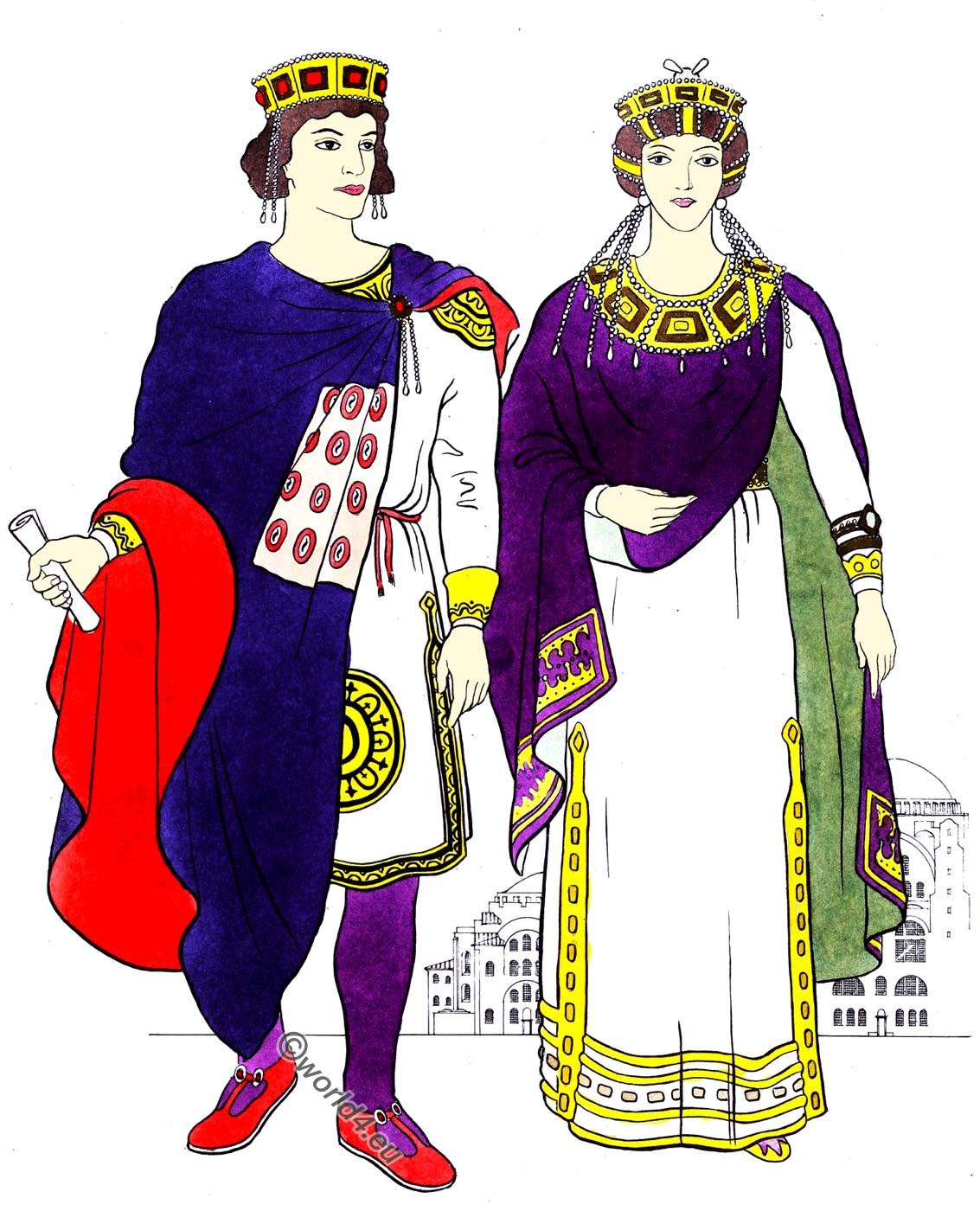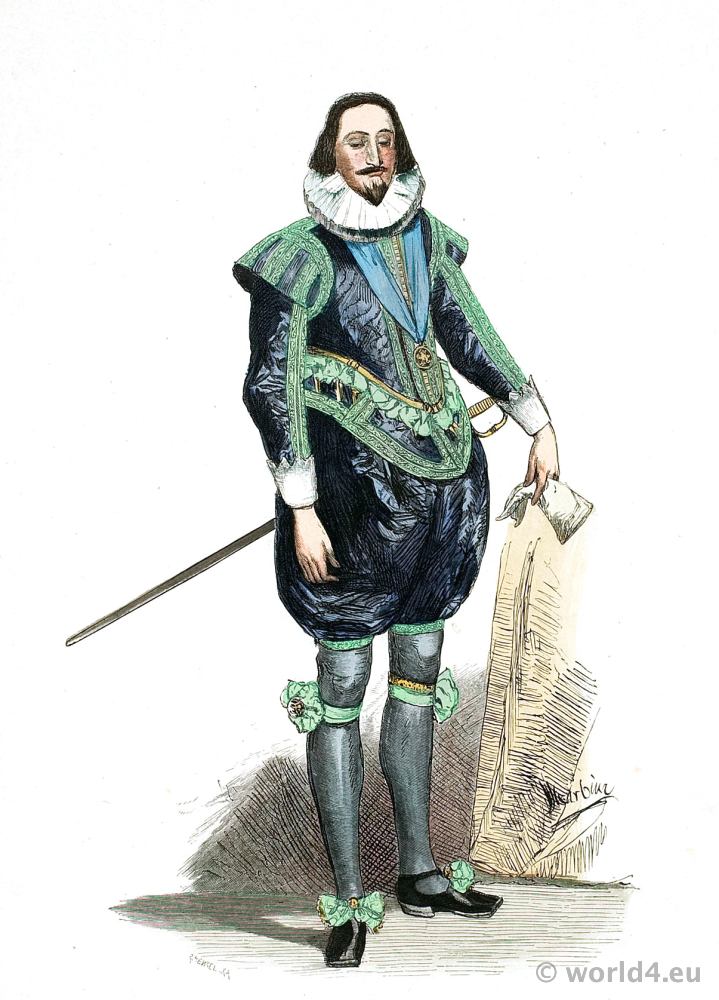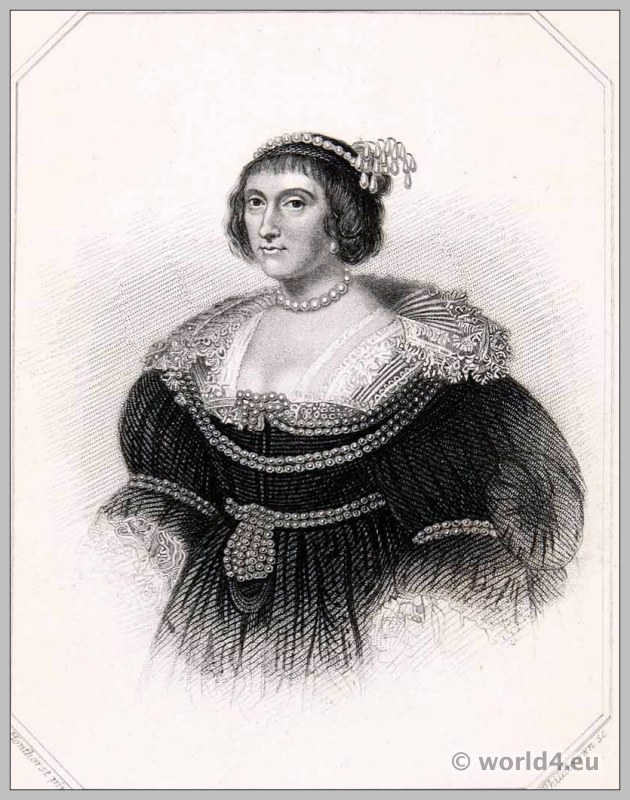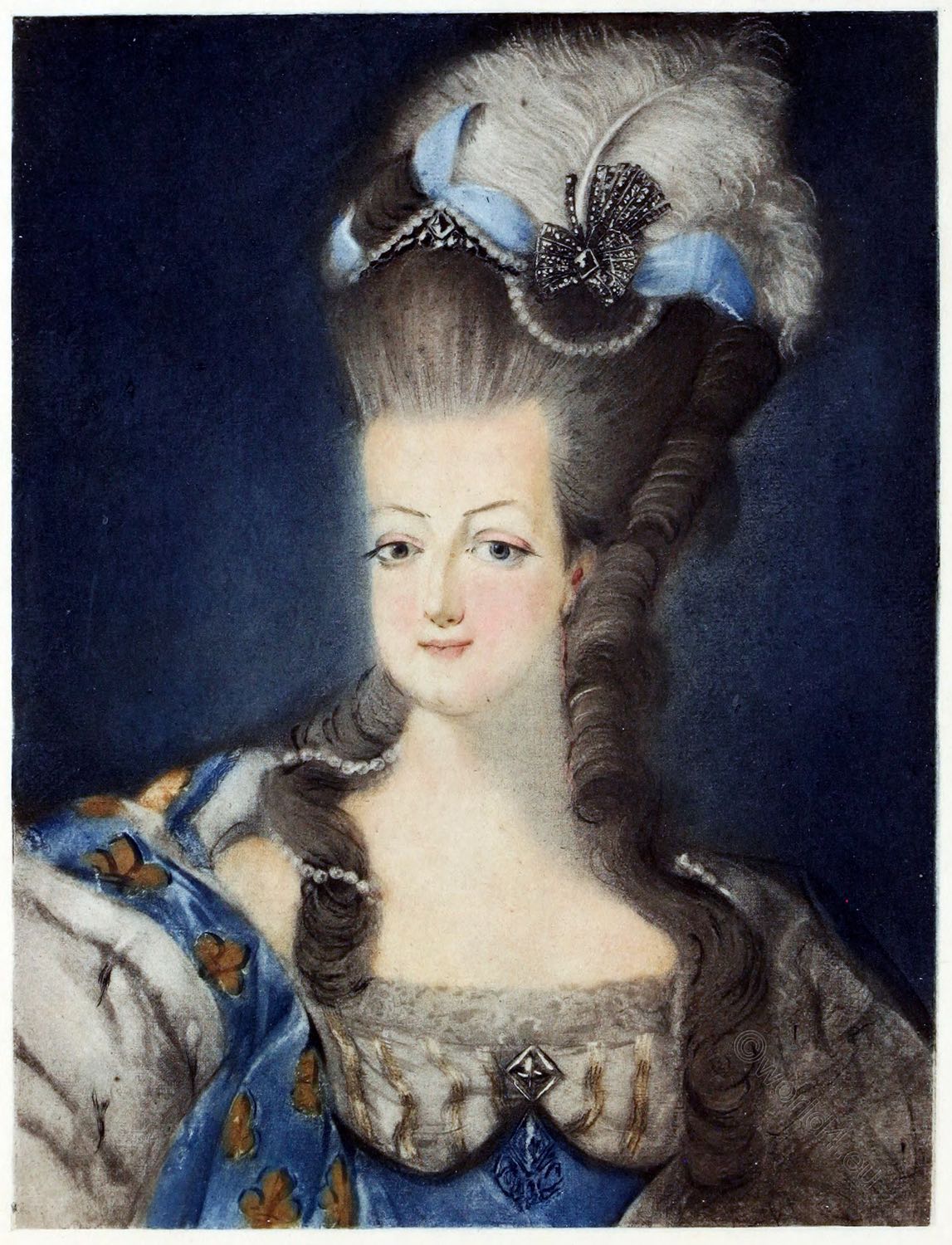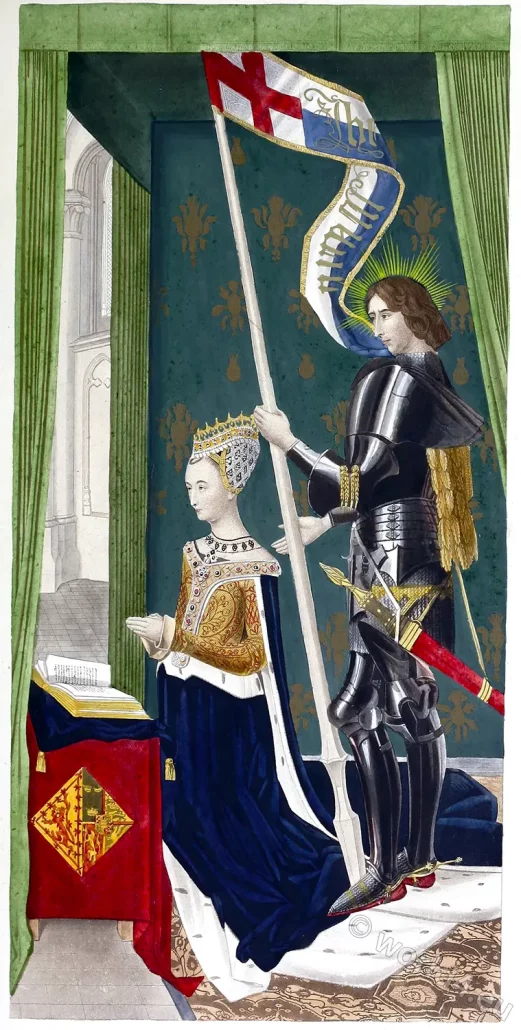
QUEEN MARGARET OF SCOTLAND (1456-1486)
FROM A PAINTING AT HAMPTON COURT.
CONTEMPORARY writers have recorded few incidents of the private life of the princess whose portrait forms the subject of our engraving: hut they are unanimous in representing her as an amiable and virtuous woman. Margaret was the daughter of Christian I, King of Denmark, Norway and Sweden, founder of the Oldenborg dynasty, and Dorothea of Brandenburg. She was married to James III. King of Scotland in 1469, when she had scarcely completed her sixteenth year. By this marriage, the crown of Scotland became possessed of the Orkney and Shetland Islands, which had belonged to Denmark during six centuries, and which were now given as Margaret’s dower.
In marrying the King of Scotland, Margaret became the queen of a country which was already distracted with civil dissensions. When James returned from Denmark with his bride, the first intelligence which reached him on his approach to the Scottish shores, was of plots and conspiracies: and after a troubled reign, he was murdered on the 18th of June, 1488, when he was flying from the field of battle in which his army had been defeated by that of his rebellious subjects, and had taken shelter in a peasant’s cottage.
The queen died two years before him, in 1486. She is said to have been neglected by her husband; and her early death was probably caused as much by domestic afflictions, as by anxiety at the troubles of James’s reign. The old writers praise her for her great beauty and piety.
The painting from which our picture is taken, is now preserved at Hampton Court. It was formerly in the palace at Kensington. It is believed to have been executed between the years 1482 and 1484; and consists of three compartments. From its appearance it is supposed to have been intended for an altar piece: and was perhaps, as has been conjectured, painted for the royal chapel at Stirling, founded with great magnificence by king James III.
Our engraving represents the second compartment only. The queen has a singularly rich head-dress, loaded with gold, precious stones, and pearls. Her coat is of cloth of gold. She is attended by a saint, supposed to be Canute, the patron saint of Denmark, and it has been imagined that his features may be intended to represent those of her royal father Christian I. On the table or altar, before which she is kneeling, are seen the arms of Denmark and Scotland.
The first division of the original picture represents her husband, King James III., similarly kneeling, with their young son (afterwards King James IV. i. and St. Andrew, the patron of Scotland
Our initial letter is taken from the splendidly illuminated missal, formerly at Strawberry Hill, which has furnished another initial to the present work. The effigy below, representing Lady Vernon, is described in our article on her husband, Sir Richard Vernon, where this figure was unavoidably omitted.
Source: Dresses and Decorations of the Middle Ages from the seventh to the seventeenth centuries by Henry Shaw F.S.A. Published: London William Pickering 1843.



